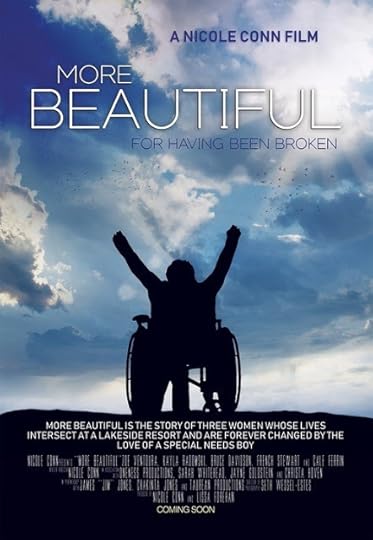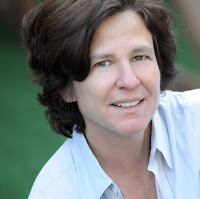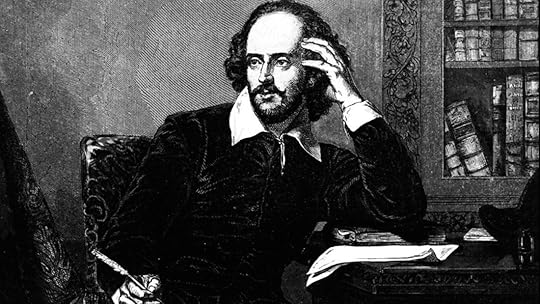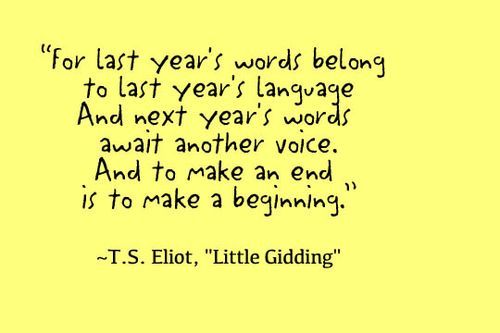Kenneth Atchity's Blog, page 104
January 13, 2019
Book sales are up this year over last year, and physical books are thriving

It’s a tale as old as time, or, at least, the internet: None of us are reading any more, the physical book is dead, Amazon has killed the independent bookstore, and it’s all only going to get worse. But this year, the story looks like just that—a fiction. We are buying books—especially the kind with physical pages—and we’re doing so, increasingly, in well-loved indie bookstores.
In the UK, the Guardian reports, Nielsen BookScan recored year-on-year book sale growth of 22 million pounds ($28 million). It’s likely that 2018 will top 2016’s total sales of 1.59 billion pounds, too, with booksellers on both sides of the Atlantic noting an anecdotal uptick in sales and browsing customers. It’s been good news for British book chains—the country’s largest bookseller, Waterstones, made its first profit since the 2008 financial crisis—and for independent bookshops, too: this year was the first since the advent of Amazon where the number of stores actually went up, rather than down.
In the United States, the news is even rosier for indies: the number of independent bookstores grew by 35 percent between 2009 and 2015, while sales of physical books have increased every year since 2013. (For big booksellers, it’s been trickier: Barnes & Noble’s annual report told harrowing tales of store sales down 5.4% from 2017, with total sales in decline since 2014.)
We’re buying books, and we’re favoring the kind you can borrow, lend, or drop in the bath: In 2017, print book sales were up 10.8% from four years earlier. (Between 2016 and 2017, however, e-book sales actually dropped 10 percent.) In October of this year, book sales were at $699 million, up by $50 million from a year earlier.
Perhaps surprisingly, Vox’s The Goods attributes this growth to our phones. By reading off-line, writes Nisha Chittal, we’re trying to mediate our screen times, driving up demand for paper books. On the other hand, when we are on our phones, we’d like everyone to know how well-read we are, usually via virtue-signaling #100booksin2018 Instagram posts—and that means buying books to show off. “All this bookstagramming has led to a thriving space for book lovers on social media,” Chittal writes, “and that’s been a good thing for independent bookstores too — because it plays to their key strength: creating community.” Booksellers are growing wise to our swipe-happy ways, and making sure their wares and whereabouts have a home and community online, where they’re lodged firmly in our minds and feeds.
Book sales may never recover to their pre-internet highs, but it’s encouraging news for aspiring novelists, anxious booksellers, and voracious readers alike.
Read more

Published on January 13, 2019 00:00
January 11, 2019
Nicole Conn's New Film More Beautiful Coming Soon

MoreBeautifulMovie.com
 writer/director Nicole ConnMore Beautiful is thematically characterized by the Japanese term Kintsukuroi – which means More Beautiful for Having Been Broken –This title is perfect for what has become an exquisite mainstream family drama.
writer/director Nicole ConnMore Beautiful is thematically characterized by the Japanese term Kintsukuroi – which means More Beautiful for Having Been Broken –This title is perfect for what has become an exquisite mainstream family drama. FEATURING
Cale Ferrin whose extraordinary breakout performance in this film will touch everyone’s heart.
 Cale Ferrin
Cale Ferrin
 with and Kayla Radomski
with and Kayla RadomskiCale's portrayal of “Freddie” is not only brave and raw but will really help people to understand what a child with Special Needs goes through on a daily basis. And congrats to Cale who is currently working on a Hulu series in Toronto.
 Cale Ferrin and Zoe Ventoura
Cale Ferrin and Zoe Ventoura Zoe Ventoura
Zoe Ventoura
 Kayla Radomski and Cale Ferrin
Kayla Radomski and Cale FerrinThe entire cast is stellar – headed up by Zoe Ventoura and Kayla Radomski - both of their journeys’ are relatable on so many levels. And the supporting cast is pretty darn remarkable for a film this size: Bruce Davidson, French Stewart, Brooke Elliott, Harley Jane Kozak, Gaby Christian, Kay Lenz and my daughter Gabrielle Baba-Conn.
 It's a wrap!!!
It's a wrap!!!  French Stewart, Cale Ferrin, Bruce Davidson
French Stewart, Cale Ferrin, Bruce Davidson  Harley Jane Kozak and Gaby Christian
Harley Jane Kozak and Gaby Christian Brooke Elliott, Cale Ferrin and Gaby Christian
Brooke Elliott, Cale Ferrin and Gaby ChristianNicoleConn.com

Published on January 11, 2019 00:00
January 9, 2019
January 7, 2019
Guest Post: BILL SHAKESPEARE: AN AGENT’S DREAM CLIENT by Nancy Nigrosh

Many writers often mistake writing as a source of personal identity, instead of a job, a business or a product.
The original Greek dramatists celebrated the gods in their work, but they had no issue claiming ownership as authors. They were successfully self-promoting to the extent their work is still performed and still attracting profitable enterprise. If the Greeks are too distant a reference, let’s take a look at the king of all the writing gods: Bill Shakespeare.
He is unmistakably the consummate businessman who founded a repertory company, secured patrons, erected a theatre, and promoted its product while writing some of the world’s greatest plays as a line item alongside all the rest. He is the credited writer of over 1,000 screenplays. At this very moment films based on his work are being prepped, while countless theatrical productions of his work are being performed all over the world.
 Nancy Nigrosh spent 23 years as a top Hollywood agent representing world-class directors, writers and authors. Now she’s a writing coach, who offers insider knowledge about the process of how to attract an agent. She is an MFA alum of UCLA’s Theater, Film & Television Program, and serves as a judge for UCLA’s Annual Master Screenwriting Competition. She also holds an MA in Education and two Teaching Credentials from Antioch University. She teaches at UCLA Extension Writers’ Program, and frequently contributes to Indiewire. She’s on the Board of the Los Angeles Historic Theater Foundation and an Advisory Board member of BookWorks a worldwide Self-Publishers Association in partnership with Publishers Weekly.
Nancy Nigrosh spent 23 years as a top Hollywood agent representing world-class directors, writers and authors. Now she’s a writing coach, who offers insider knowledge about the process of how to attract an agent. She is an MFA alum of UCLA’s Theater, Film & Television Program, and serves as a judge for UCLA’s Annual Master Screenwriting Competition. She also holds an MA in Education and two Teaching Credentials from Antioch University. She teaches at UCLA Extension Writers’ Program, and frequently contributes to Indiewire. She’s on the Board of the Los Angeles Historic Theater Foundation and an Advisory Board member of BookWorks a worldwide Self-Publishers Association in partnership with Publishers Weekly.Read more

Published on January 07, 2019 00:00
January 4, 2019
Laurence O’Bryan's 10 critical things to get right before you get started on Amazon ads

1. Expect to invest time in understanding how the AMS platform works, what keywords to use, what bids to make and how to monitor results so you can make adjustments.2. Each ad is called a campaign. You can only choose books you have published on your Amazon account for your campaigns.3. Start with a low budget ($5 a day – often not spent) test campaign. Create a naming system for your campaigns, to help you identify each campaign’s attributes quickly.4. Only spend what you can afford. It will take between a few days and a month to see sales generated for the previous period, so be patient.5. Know your royalty rates (70% or 30% if self-published – probably less if you share royalties with a publisher) or the latest KENP (Kindle Edition Normalized Pages) rate, the KDP Select per-page read rate royalty. The rate rose to $0.0046 in June ’18 and has been at about that level each month recently. That means that currently for 1,000 pages read Amazon pays the author $4.60 if the book is in Amazon Select.6. You will need to maintain an ACOS (Advertising cost of sales) below 70% to be in profit if you are on 70% royalty and below 30% if you are on a 30% royalty rate on your ebooks.7. As sales and borrows are slow to report, a good metric to focus on is your CPC – Cost per Click. A low cost per click, 12c for instance, means it cost you 12c each time someone clicked your ad and was taken to the Amazon book page for your book.8. Ensure your book description on Amazon is the best it can be before starting your Amazon ads. There is no point in paying to get people to look at your book/s on Amazon if the Amazon description/s will not help you sell it.9. Ensure your cover/s look amazing. Homemade covers are no longer appropriate, except in rare circumstances. Look at the covers of the books at the top of your genre and rate yours against them. If your cover is not as amazing get a cover designer, not a graphic designer to make you a new one. This is not as expensive as previously. 10. Ensure you have at least three honest (not one line) reader reviews on Amazon.com before you start. Read moreLaurence O’Bryan founded BooksGoSocial in 2013. He previously worked as a sales director for a software as a service firm and in technology marketing for over twenty-five years. He also founded the Dublin Writers Conference in 2014.

Published on January 04, 2019 00:00
January 2, 2019
January 1, 2019
Happy New Year
Published on January 01, 2019 00:00
December 31, 2018
Spotlight: Success of films with Chinese elements in North America excites Hollywood insiders
"The Meg" is the highest-grossing U.S.-Chinese co-production of all time in North America.

The success of Hollywood films with Chinese elements at North American box office in 2018 has attracted interest from critics and Hollywood insiders, triggering enthusiastic discussions about cooperation between Chinese and American film industries.
The shark-themed thriller, "The Meg," and the racial diversity triumph, "Crazy Rich Asians," are among the most successful films incorporating China-related elements, gaining mainstream appeal in North America.
Hollywood films incorporating Chinese elements, including "The Meg," "Crazy Rich Asians" and Legendary and Universal's big-budget release "Pacific Rim: Uprising," have stayed atop North American weekend box office 5 out of 51 weeks as of Dec. 23 this year.
"The Meg," a Chinese-American co-production, released by Gravity Pictures in China and by Warner Bros. Pictures in the United States, grossed more than 530 million U.S. dollars in the global box office against a production budget of around 150 million dollars.
"Crazy Rich Asians" was a Warner Bros. Pictures release, and produced by SK Global, Color Force, Ivanhoe Pictures, Electric Somewhere and China-backed firm Starlight Culture. The romantic comedy-drama film, based on Kevin Kwan's novel of the same name and directed by Chinese American filmmaker Jon M. Chu, has brought in 238 million dollars worldwide against a modest 30-million-dollar production budget.
"Chinese co-productions have been among the most successful films of 2018. Titles like 'Crazy Rich Asians' and 'The Meg' reflected a true understanding of what global audiences are looking for when they go to the multiplex," said U.S. movie analyst Paul Dergarabedian at Comscore.
Dergarabedian pointed out that "Crazy Rich Asians" became a comedy sensation in North America and drew audiences of all backgrounds who were attracted by its universal themes and relatable situations while "The Meg" featured an irresistible concept embraced by audiences on a global scale and also featured notable Chinese talent.
"Films like 'The Meg' and 'Crazy Rich Asians' are great models for how to perfectly combine the best of U.S. and China-based talent to create appealing filmed content for global consumption. In the future, we will likely see more such productions and perhaps there will be more China-based productions that reflect the taste and culture and Chinese point of view that could be produced in a way that will enable them to cross over in a more profound way to audiences outside of their country of origin," he told Xinhua.
"The Meg" is already the highest-grossing U.S.-Chinese co-production of all time and "Crazy Rich Asians" became the highest-grossing romantic comedy of the last 10 years in North America.
"The growth and importance of the Chinese movie market has been incredibly impressive, with a growth rate that has been sparked over the years by the building of state-of-the-art cinemas that inspired enthusiasm by audiences who flocked to a multi-faceted slate of home grown and U.S.-based productions. Its yearly revenue has come close to rivaling that of North America and is the second biggest movie market in the world," he noted.
The follow-up of "Crazy Rich Asians" is reportedly in the development stages. The team behind the film is planning to reunite for the sequel, based on Kwan's second book, "China Rich Girlfriend." Producers said the new film is targeting a shoot in Shanghai, and possibly as a co-production.
"There have been many earlier attempted co-productions where the story didn't really work for both audiences, and so it felt forced and strange. As the two film industries have worked together more though, they've found ways to make the Hollywood and China elements live together naturally, so then the story feels believable and strong, and movie audiences respond," said Elizabeth Dell, head of the China Task Force of the Producers Guild of America, adding that audiences love new stories and new worlds to explore, but they have to feel authentic.
She noted that the progress of China's film industry over the last ten years has been remarkable. "I think there is still more progress to make, especially in the areas of strengthening skills and understanding of story and of producing, but the Chinese film industry continues to impress me with the quality and breadth of the work," She told Xinhua.
"Successful cooperation and co-production needs to look to stories and creators that work between the two industries and so naturally know how to collaborate in a seamless way," said Dell.
"Experience is key. It cannot come from only one film or one collaboration; it comes from a history of many projects together and learning how each culture thrives," she concluded.
"The growth of the Chinese film industry reflects the growth of the Chinese middle class, which has been meteoric and will continue to be over the next five to ten years," said William Mundell, producer of "Better Angels," a documentary film examining the U.S.-China relations through the lives of ordinary citizens of the two countries.
Mundell added that China is an obvious target for American film makers who are looking to expand beyond their existing mature markets.
"The film industry in Hollywood has a history of over 100 years so it's very developed. China can learn from that and create its own distinctive version of Hollywood," he told Xinhua.
Read more


The success of Hollywood films with Chinese elements at North American box office in 2018 has attracted interest from critics and Hollywood insiders, triggering enthusiastic discussions about cooperation between Chinese and American film industries.
The shark-themed thriller, "The Meg," and the racial diversity triumph, "Crazy Rich Asians," are among the most successful films incorporating China-related elements, gaining mainstream appeal in North America.
Hollywood films incorporating Chinese elements, including "The Meg," "Crazy Rich Asians" and Legendary and Universal's big-budget release "Pacific Rim: Uprising," have stayed atop North American weekend box office 5 out of 51 weeks as of Dec. 23 this year.
"The Meg," a Chinese-American co-production, released by Gravity Pictures in China and by Warner Bros. Pictures in the United States, grossed more than 530 million U.S. dollars in the global box office against a production budget of around 150 million dollars.
"Crazy Rich Asians" was a Warner Bros. Pictures release, and produced by SK Global, Color Force, Ivanhoe Pictures, Electric Somewhere and China-backed firm Starlight Culture. The romantic comedy-drama film, based on Kevin Kwan's novel of the same name and directed by Chinese American filmmaker Jon M. Chu, has brought in 238 million dollars worldwide against a modest 30-million-dollar production budget.
"Chinese co-productions have been among the most successful films of 2018. Titles like 'Crazy Rich Asians' and 'The Meg' reflected a true understanding of what global audiences are looking for when they go to the multiplex," said U.S. movie analyst Paul Dergarabedian at Comscore.
Dergarabedian pointed out that "Crazy Rich Asians" became a comedy sensation in North America and drew audiences of all backgrounds who were attracted by its universal themes and relatable situations while "The Meg" featured an irresistible concept embraced by audiences on a global scale and also featured notable Chinese talent.
"Films like 'The Meg' and 'Crazy Rich Asians' are great models for how to perfectly combine the best of U.S. and China-based talent to create appealing filmed content for global consumption. In the future, we will likely see more such productions and perhaps there will be more China-based productions that reflect the taste and culture and Chinese point of view that could be produced in a way that will enable them to cross over in a more profound way to audiences outside of their country of origin," he told Xinhua.
"The Meg" is already the highest-grossing U.S.-Chinese co-production of all time and "Crazy Rich Asians" became the highest-grossing romantic comedy of the last 10 years in North America.
"The growth and importance of the Chinese movie market has been incredibly impressive, with a growth rate that has been sparked over the years by the building of state-of-the-art cinemas that inspired enthusiasm by audiences who flocked to a multi-faceted slate of home grown and U.S.-based productions. Its yearly revenue has come close to rivaling that of North America and is the second biggest movie market in the world," he noted.
The follow-up of "Crazy Rich Asians" is reportedly in the development stages. The team behind the film is planning to reunite for the sequel, based on Kwan's second book, "China Rich Girlfriend." Producers said the new film is targeting a shoot in Shanghai, and possibly as a co-production.
"There have been many earlier attempted co-productions where the story didn't really work for both audiences, and so it felt forced and strange. As the two film industries have worked together more though, they've found ways to make the Hollywood and China elements live together naturally, so then the story feels believable and strong, and movie audiences respond," said Elizabeth Dell, head of the China Task Force of the Producers Guild of America, adding that audiences love new stories and new worlds to explore, but they have to feel authentic.
She noted that the progress of China's film industry over the last ten years has been remarkable. "I think there is still more progress to make, especially in the areas of strengthening skills and understanding of story and of producing, but the Chinese film industry continues to impress me with the quality and breadth of the work," She told Xinhua.
"Successful cooperation and co-production needs to look to stories and creators that work between the two industries and so naturally know how to collaborate in a seamless way," said Dell.
"Experience is key. It cannot come from only one film or one collaboration; it comes from a history of many projects together and learning how each culture thrives," she concluded.
"The growth of the Chinese film industry reflects the growth of the Chinese middle class, which has been meteoric and will continue to be over the next five to ten years," said William Mundell, producer of "Better Angels," a documentary film examining the U.S.-China relations through the lives of ordinary citizens of the two countries.
Mundell added that China is an obvious target for American film makers who are looking to expand beyond their existing mature markets.
"The film industry in Hollywood has a history of over 100 years so it's very developed. China can learn from that and create its own distinctive version of Hollywood," he told Xinhua.
Read more

Published on December 31, 2018 00:00
December 29, 2018
Kristin Wong Tells You How to Finally Write Your Nonfiction Book

No, it will not be easy. Yes, it will be rewarding. (Eventually.)
“I’d like to write a book someday.”
Like many writers, I said this for years before finally deciding to commit to the long and grueling process of publishing my first book, which is about personal finance.
Most authors would probably agree that writing a book is one of the most difficult challenges of their careers. You spend your summer inside writing while your friends post photos of their beach vacations on Instagram. Once your book is published, the work is far from over: You must now sell it like your career depends on it, because it kind of does. Failure is a constant fear, and impostor syndrome can feel overwhelming. But more often than not, it’s also completely worth it.
Consider your ‘platform’
Before you write your first word, ask yourself: Do I have an audience? And, most important: Does my idea actually appeal to readers?
“My most common recommendation for people who want to write a book is, ‘Don’t — not yet,’” said Ramit Sethi, the author of “I Will Teach You to Be Rich.” “Build a large audience first.” Mr. Sethi, whose nonfiction personal finance book started as a blog with the same title, was able to amass hundreds of thousands of readers before he landed a book deal.
Building an audience isn’t a prerequisite, of course, and it’s certainly not easy, but publishers like authors who come with a built-in market.
Don’t write your book — yet
Many aspiring authors assume that getting started means cranking out tens of thousands of words before you approach an agent or publisher, but it might depend on the book. If you have an idea for a nonfiction book, it’s better to write a couple of chapters and then pitch a book proposal. That way, you can see if there’s any interest before you churn out 80,000 words on a given topic.
Even though you might not need to write the entire book before pitching it, it’s likely that if an agent or potential publisher likes the idea, they’ll still want to see at least two sample chapters. In any case, you’re going to want to fully flesh out your idea and write up those sample chapters before reaching out to agents, or, if you’re still building an audience, a few blog posts on your topic. Doing so will give you a deeper sense of what your book is about and what the rest of the writing process will be like — and this will also help you firm up your ideas of what the rest of the book will be like.
Decide how to publish
With traditional publishing, you’ll put together a book proposal, find an agent and then your agent will send your proposal to publishers. If those publishers like your idea, they could make you an offer. If multiple publishers like your idea your book might even go to auction, which could help you secure a more lucrative deal.
If a publisher buys your book, your advance from the publisher will likely be paid out in installments (typically two or three). How those payments are broken up varies widely, but one possible combination is a third paid on contract signing, another third on manuscript delivery, and the final third upon publication. (Though sometimes the advance is paid out in two sums, and, in some instances, four or more.) You won’t earn royalties from your book until you sell enough copies to outearn your advance.
Self-publishing means publishing your book on your own, or with the help of a self-publishing platform like Amazon Kindle Direct Publishing or CreateSpace, which is also owned by Amazon. Barnes & Noble also has a self-publishing platform.
“As a self-published author, you have more control of your work because you have more control of your deadlines and budget,” said Nailah Harvey, author of “Look Better in Writing.” “Some people do not work well with the pressure of third-party deadlines, so self-publishing may be a better fit for their personality.” You also have full creative control over your work, Ms. Harvey said, whereas with a publisher, you may have to bend to their ideas for your book title, cover and content.
Mr. Sethi, both a traditionally published and self-published author, said your choice will partly depend on what’s more important to you: profit or credibility. Traditional publishing lends you the latter, while self-publishing can be more profitable because you won’t have to give a percentage of sales to an agent and publisher. On the other hand, an agent and publisher might be able to help increase your reach to make those sales.
Self-publishing also means your book will be available on only the platform you publish with, and it likely will never get on shelves in physical bookstores or libraries.
If you opt to self-publish, Amazon Kindle Direct Publishing, an online publishing platform for digital books and paperbacks, is an ideal place to start. The site includes manuscript templates you can download and follow. You’ll write, edit, proofread and format the book before uploading it for approval.
Self-publishing means you have to do all of the work, like designing a cover and proofreading, yourself (or hire people to help).
Write your book proposal
While an agent will likely want to see the completed manuscript of a novel, a nonfiction book typically requires a proposal, which is a detailed outline of what your book is and why it matters. Rather than thinking of your proposal as an introduction to the book, think of it as a business case for why it’s worth a publisher’s time and investment.
You’ll make the case for your book’s marketability in this proposal, so you’ll want to include sections on your target audience, competitive titles, a table of contents and an outline. You can find downloadable book proposal templates online. For example, the publishing platform Reedsy includes detailed explanations of what’s included in a book proposal on their blog, along with a template you can download. The literary agent Ted Weinstein shares a simple nonfiction template on his website. And Jane Friedman, a Publisher’s Weekly columnist, includes a brief outline and introduction to writing a book proposal on her website.
“If it’s a big New York publishing house, they’re probably looking for an idea with relevancy or currency in the market, combined with an author who has a platform — visibility to the intended readership,” Ms. Friedman said.
Publishers also like to see numbers. Try to quantify your platform using metrics like your combined social media followers, newsletter subscribers or monthly page views on your blog.
Find an agent
“An agent is a near-requirement if you want to be published by one of the major New York publishing houses,” Ms. Friedman said. While you can approach smaller publishing houses and university presses directly, you’ll still need someone to look over your contract. If not an agent, you’ll need to hire a literary or intellectual property lawyer once you get to that step, she added.
Start your search for an agent using databases like AgentQuery and P & W’s Agents Database. You can also search Publishers Marketplace for their deals section (subscription required) and the Association of Authors’ Representatives. A lower-tech option: Look in the back of similar books to see who the author thanks in the acknowledgments.
You may have to query multiple agents about your idea. Ideally, one of them will bite and want to represent you. Then, you’ll have a helping hand through the rest of the process. The agent will pitch your book proposal or manuscript to publishers, which can lead to getting-to-know-you meetings with publishers and editors, or both. If a publisher loves your idea, your agent will then negotiate the contract and terms with input from you as needed. It sounds simple, but this can take much more time than many writers expect.
Now it’s time to write
Start by establishing your writing habit. Don’t look at your book as a monster, 80,000-word project; view it as a collection of tiny goals and achievements you can knock off one at a time. (One way to structure this type of working: make micro-progress, or the smallest units of progress.)
“Since money can equal time in some ways, I used my steady paycheck to buy myself time to write,” said Paulette Perhach, author of “Welcome to the Writer’s Life.” “For instance, I outsourced the cleaning of my place once a month while I went and wrote for three hours in a coffee shop.”
Ms. Perhach said she gave herself a small goal to write for one hour per day, then shared that goal with loved ones. She also joined writing groups, which can be a helpful step for many writers who may find it hard to turn in work without a real deadline. A 2014 Stanford study found that working on a team makes you feel motivated, even if you’re really working alone. If you have friends who like to write, you could organize a writer accountability group with weekly or monthly deadlines.
There are also existing groups and organizations you can join. In November, NaNoWriMo (which stands for National Novel Writing Month) encourages writers from all over the world to sign up on its website and begin working on a goal of writing a 50,000-word novel by the end of the month. Many libraries and writing centers host regular writing groups as well.
Think about schedules instead of deadlines
You’ll want to organize your writing workflow so you’re encouraged to keep up with the habit every day.
First figure out how much time you have to write each week, then schedule that writing time into your day. Some writers like to get their words out at night, after everyone has gone to bed. Others prefer to write as their first task of the day. Experiment with different times to find what works for you.
Once your writing schedule is in place, you’ll have to decide what you want to write. Books are big — where do you dig in first? In a lecture at Columbia University that was later published in “Changing My Mind: Occasional Essays,” the novelist Zadie Smith said there are “macro planners” and “micro managers.”
“You will recognize a macro planner from his Post-Its, from those Moleskines he insists on buying. A macro planner makes notes, organizes material, configures a plot and creates a structure — all before he writes the title page. This structural security gives him a great deal of freedom of movement,” Ms. Smith said in her lecture. Micro managers, on the other hand, have no master plan for their writing and simply figure out the ending when they get there.
Again, a little trial and error works well. You can try to just start writing your first draft, and if you find yourself stuck, start again with the outline and work from there. Or you might just try to start writing about something that excites you.
If your writing system feels chaotic, there are tools that can help you corral the mess. Scrivener is a popular writing program designed to help authors organize and research their books. When writing my book, I used a simple Excel spreadsheet that included my table of contents, along with the tasks that went with it. Each chapter also had its own separate Excel sheet that included more detail about what I wanted to include in that chapter, like interviews, references and research.
Dig in for the long haul
The most common question aspiring authors asked when I finished my book: How long did it take? It’s hard to quantify how long it took, but writing a book is an exercise in patience.
When I started to get serious about my idea, I bought “How to Write a Book Proposal.” From there, it was two and a half years until I convinced an agent to represent my idea, and another year and a half before my book was on a shelf.
“I think you should plan for at least one year to write the first draft of a book, and a second year to rewrite it,” Ms. Perhach said. Of course, it can take much longer than this, but most writers can expect at least a couple of years to pen a book.
“Writing is like putting together Ikea furniture,” she added. “There’s a right way to do it, but nobody knows what it is.”
Read more

Published on December 29, 2018 00:00







